Q
how to charge byd atto 3 at home
To reset the Bluetooth connection on your Perodua Alza, start by switching on the vehicle and making sure the infotainment screen is active. Navigate to the audio system's settings menu, then look for options like "Bluetooth Devices" or "Paired Devices." Select the connected device and tap "Delete" or "Unpair." Once done, turn off the car, wait about 30 seconds, and restart it—the Bluetooth list should now be clear, letting you search for and pair new devices. If issues persist, try holding down the audio system's power button for over 10 seconds to reboot the system, or check the user manual for the "Factory Reset" option (note this will erase all saved settings). For general Bluetooth problems, regularly deleting unused devices helps free up system resources. Also, ensure your phone's Bluetooth version is compatible with the head unit—frequent disconnections might point to unstable car power supply or pending phone software updates. Perodua's Bluetooth systems are designed to be straightforward, with similar operation logic to models like the Myvi, so anyone familiar with Perodua's multimedia setups should get the hang of it quickly. For technical troubles, reach out to a Perodua authorized service center for professional help.
Special Disclaimer: This content is published by users and does not represent the views or position of PCauto.
Related Q&A
Q
What is the lifespan of the battery in the BYD Atto 3?
The BYD Atto 3's battery lifespan typically sits around 8 to 10 years, though this can vary depending on your driving habits and charging routines. Under the hood (or rather, under the floor), it's packing BYD's in-house developed Blade Battery, a lithium iron phosphate (LFP) unit that's big on safety and long-term durability. Official specs tell us this battery can handle around 3,000 full charge-discharge cycles. Doing some quick math on daily usage, that translates to over 300,000 kilometers driven while still retaining more than 80% of its original capacity.
Now, for our friends in Malaysia, that hot climate might nudge the battery life a tiny bit, but the Blade Battery's thermal management system does a solid job of keeping temperatures in check. A pro tip? Try to avoid super frequent fast charging and leaving the battery sitting at 100% for ages – that'll help stretch its life even further. Let's not forget, battery longevity also ties in closely with regular maintenance. Keeping an eye on the battery's health status and sticking to the manufacturer's service recommendations are key moves.
Here's a reassuring thought: these days, the actual usable life of most EV batteries often outlasts how long owners typically keep their cars. Plus, BYD backs the Atto 3 with an impressive 8-year or 150,000-kilometer battery warranty, which covers the bulk of your ownership journey. So, Malaysian drivers, there's really no need to lose sleep over battery life with this one.
Q
Can you put roof racks on a BYD Atto 3?
Yep, the BYD Atto 3 can definitely handle a roof rack, but you’ll want to stick with accessories specifically designed for this model to make sure everything fits right and stays safe. The Atto 3’s roof comes with pre-installed mounting points, which makes adding crossbars or a roof box a breeze—perfect for hauling bikes, surfboards, or extra luggage when you need the space.
In Malaysia, you can find both genuine BYD roof rack setups and third-party options that are certified, either at auto accessory shops or BYD’s authorized dealers. My tip? Go for products that have passed safety tests. You don’t want to risk damaging the roof structure by skimping here.
When you’re installing, keep an eye on the weight limits. The Atto 3’s dynamic roof load (that’s when you’re driving) is usually around 50-75kg, and the static load (when parked) is higher, but check your owner’s manual for the exact numbers—don’t guess on that.
Also, remember that a roof rack adds wind resistance, which can hit your EV’s range, especially at higher speeds. It’s probably best for shorter trips. And make a habit of checking the bolts now and then to keep everything tight.
For folks in Malaysia, our hot and humid weather can speed up rust on metal parts, so either pick roof racks made with rust-resistant materials or give them regular maintenance to keep them going longer. If you’re loading stuff often, you might also think about a rear-mounted bike rack or a tow hitch as alternatives—just make sure whatever you choose plays by local traffic rules.
Q
How many kilometers is Atto 3 full charge?
The BYD Atto 3, as a pure electric SUV, offers an official range of approximately 480 kilometers on a full charge under the WLTP standard. Now, real-world driving range can vary a bit depending on things like your driving style, road conditions, and how much you use the air conditioning – totally normal, right? But overall, it's more than capable of handling Malaysian drivers' daily commutes and those quick weekend getaways.
Given Malaysia's warm weather, a quick tip: using the AC sensibly and keeping a steady driving pace can really help optimize that range. And let's talk about peace of mind – the Atto 3's Blade Battery technology is a standout here, offering solid safety and stability, which is perfect for our local climate with its frequent rain and high temperatures.
For EV owners, staying on top of battery health checks and planning routes with public charging stations in mind will definitely make your driving experience smoother. Plus, the Atto 3 supports fast charging – you can go from 30% to 80% in around 30 minutes, which means way less time twiddling your thumbs at the charger.
The Malaysian government is really pushing for EV adoption these days, with more charging infrastructure popping up and some nice tax incentives. So, picking a high-value option like the Atto 3 isn't just about enjoying emission-free driving; it's also a smart move to align with the country's growing focus on greener mobility.
Q
Can BYD ATTO 3 self drive?
The BYD ATTO 3, as a pure electric SUV, doesn't come with full self-driving capabilities just yet, but it does pack a pretty advanced Advanced Driver Assistance System (ADAS). This setup delivers a taste of automated driving with features like Adaptive Cruise Control (ACC), Lane Keeping Assist (LKA), and Automatic Emergency Braking (AEB). These tech tools are real lifesavers on highways or in stop-and-go traffic, taking some of the strain off the driver – though it’s crucial to stay alert and ready to take over at any moment.
For Malaysian drivers, the ATTO 3’s smart features should be more than enough for daily commuting needs. That’s especially true in busy urban spots like Kuala Lumpur, where these driver-assist functions can really step up both safety and convenience behind the wheel. It’s worth keeping in mind, though, that while self-driving tech is evolving fast, most cars on the market right now are still at Level 2 assisted driving. Full autonomy (L4 or L5) is still not mainstream. So, while it’s great to enjoy the perks of this tech, it’s just as important to understand the limits of what these systems can do to keep everyone safe on the road.
Beyond its tech, the BYD ATTO 3 also stands out in Malaysia with its solid driving range and local service support. All these factors combined make it a strong contender for anyone looking to jump into the electric vehicle game.
Q
How much does it cost to charge a BYD ATTO 3 at home?
In Malaysia, the cost to charge your BYD ATTO 3 at home really comes down to your electricity rate and the battery size. The ATTO 3 packs around a 60.48kWh battery, right? So if you’re on TNB’s residential tariff, averaging about RM0.30 per kWh, a full charge would set you back roughly RM18.14. Of course, the actual cost might wiggle a bit depending on the time of day you charge or those tiered pricing structures they have.
One thing to note: home charging usually means plugging into an AC slow charger (around 7kW), which takes about 8-10 hours to top up the battery. That’s why most folks find it easiest to charge overnight—perfect for taking advantage of off-peak rates if you can get ’em. Compare that to public DC fast chargers, which can blast you up to 80% in 40 minutes, but man, those things cost 2-3 times more than charging at home. Ouch.
Here’s a pro tip for Malaysian owners: hit up TNB about their EV-specific tariff plans, like the EV Tariff. These often hook you up with sweet discounts for nighttime charging, which can knock down your running costs even more. Now, installing a home charger isn’t free—you’re looking at an initial outlay of around RM2,000 to RM4,000 for installation. But here’s the kicker: over time, you’ll save roughly 60% on energy costs compared to a gas-powered car. Plus, the Malaysian government is throwing in incentives like tax breaks for EV charging gear, so it’s worth chatting with a certified installer to see what deals you can score. Trust me, the long-term savings make that upfront cost totally worth it.
Q
Is the BYD ATTO 3 fully electric or hybrid?
The BYD ATTO 3 is a fully electric SUV with no hybrid option in sight. It's packed with BYD's in-house developed Blade Battery tech, offering around 480km of NEDC range – though your actual mileage might vary depending on how you drive. This makes it a solid fit for Malaysian drivers needing a reliable runabout for daily commutes or quick weekend getaways.
Being a pure EV, the ATTO 3 taps into Malaysia's government incentives for electric vehicles, which means sweet savings on import duties and road tax. Plus, its zero-emission credentials align perfectly with the growing eco-conscious vibe. BYD's no newcomer to the EV game; they're a global leader, and their electric vehicle tech has been road-tested and proven. The ATTO 3 shines when it comes to safety, smart driving assists, and in-car tech – think that cool rotating infotainment screen and the DiLink smart connectivity system.
And let's not forget Malaysia's charging infrastructure is slowly but surely getting better, making life with a pure EV more hassle-free. All in all, the BYD ATTO 3 strikes a nice balance between performance, green credentials, and everyday practicality.
Q
What is the top speed of the byd atto 3?
The BYD Atto 3, as an all-electric SUV, tops out at 160 km/h – more than enough oomph for zipping around Malaysian cities or cruising down the highway. And let's not forget, electric motors are total beasts when it comes to off-the-line acceleration, which the Atto 3 definitely delivers on. Under the hood (or rather, under the floor), you've got a motor cranking out 204 horsepower and 310 Nm of torque. Pair that with BYD's e-Platform 3.0 tech, and you're looking at a smooth, refined drive that's also surprisingly efficient with energy.
Now, Malaysia's tropical climate can be tough on batteries, but the Atto 3's battery management system does a solid job of keeping things stable and performing at their best. That WLTP-rated range of around 400 km? Perfectly suitable for most folks' daily grind around here. On top of that, electric vehicles mean lower maintenance bills and a greener footprint – two big ticks, especially with the Malaysian government really pushing those green mobility initiatives lately.
If you're thinking about making the switch to electric, top speed is just one piece of the puzzle. Charging convenience, how far you can go on a single charge, and reliable after-sales support are huge factors too. And honestly? The Atto 3 checks those boxes pretty well, making it a compelling option in the EV space.
Q
Can I charge my byd atto 3 to 100%?
Can the BYD Atto 3 be charged to 100%? Absolutely, this electric vehicle supports a full charge. However, to maximize battery lifespan, it's best to keep the charge level between 20% and 80% for daily use, only topping it up to 100% when you need maximum range for a long road trip. The Atto 3 is equipped with a lithium iron phosphate (LFP) battery, which offers better thermal stability and a longer cycle life compared to traditional ternary lithium batteries, so occasional full charges won't have much impact on the battery. For Malaysian users, the hot climate can affect battery performance a bit. It's advisable to avoid prolonged charging in high-temperature environments; instead, try to charge in shaded areas or during the cooler night hours to keep the battery in good shape. Additionally, regular use of slow charging helps balance the cell voltages in the battery pack, further enhancing battery efficiency. If you plan to leave the vehicle parked for an extended period, it's recommended to keep the charge around 50%, and when you start using it again, perform a full charge-discharge cycle to calibrate the battery management system.
Q
Does the ByD Atto 3 come with a charging cable?
The BYD Atto 3 typically comes with a standard home charging cable here in Malaysia, letting owners juice up directly from regular household power outlets. But it's worth noting that exact specs might vary a bit depending on the dealer or any ongoing promotions, so it’s always a good idea to check with your local BYD showroom before finalizing your purchase. For Malaysian drivers, that home charging cable is a solid daily companion. Yeah, the charging speed is on the slower side, but it’s super cost-effective—perfect for overnight top-ups when you’re not in a rush. If you need a quicker boost, though, the Atto 3 does support DC fast charging. You’ll just need to hit up public charging stations, which are popping up more and more these days—think shopping malls, petrol stations, and the like across the country. On the support front, BYD’s after-sales network in Malaysia is steadily growing too. Their official app is handy for locating nearby charging spots and service centers, so you can drive with peace of mind. For anyone new to EVs, getting clued up on the different charging options and where the infrastructure is located is key. That way, you can plan your trips better and really make the most of the convenience and eco-friendly perks that come with driving an electric vehicle.
Q
Can you fit 3 car seats in BYD Atto 3?
The BYD Atto 3, as a compact SUV, offers a rear seat width of approximately 1,350 millimeters. On paper, this suggests the possibility of fitting three child seats across, but the real-world feasibility hinges heavily on the specific size and design of the seats you're working with. If you opt for narrower ISOFIX child safety seats – think around 44 centimeters wide each – squeezing three side by side might just work, though it's likely to feel pretty tight. Buckling up could become a bit of a hassle too, with limited room to maneuver the seatbelts.
My advice? Don't just take the specs at face value. Parents should definitely measure the actual space in the car and, better yet, bring their child seats along to the dealership for a test fit. This way, you can check both how securely they latch in and whether there's enough comfort for the little ones.
And hey, let's not forget the legal side of things, especially here in Malaysia. The law is clear: kids must be in approved safety seats. So, when you're shopping, make sure whatever seat you pick carries the UN R44 or R129 certification, and double-check that it's installed correctly every time.
If you're regularly shuttling around multiple children, it might be worth considering a seven-seater alternative. Maybe look at the Atto 3's siblings within the BYD lineup or explore other brands' MPVs. These often provide more flexible interior layouts and can make installing multiple child seats a whole lot easier.
Popular Cars
Model Year
Car Compare
Car Photo
Latest Q&A
Q
Why is gasoline a fuel?
Gasoline can serve as a fuel because it possesses core properties suitable for providing power and the ability to convert energy. It is a hydrocarbon mixture obtained through fractional distillation and cracking of petroleum, mainly containing C5-C12 aliphatic hydrocarbons, naphthenes, and a small amount of aromatic hydrocarbons. It is characterized by volatility and flammability, with low viscosity facilitating smooth flow in injection systems, and rapid evaporation enabling quick formation of a uniform combustible mixture with air. Gasoline stores chemical energy; when ignited by a spark plug in the engine combustion chamber, it burns rapidly to release a large amount of thermal energy, which pushes the piston to move and converts into mechanical energy, providing power for vehicles such as cars and motorcycles. In addition, the anti-knock property of gasoline (measured by octane number) can adapt to engines with different compression ratios, ensuring stable operation and performance; it has a high energy density, storing more energy per unit volume, good combustion efficiency, and high availability of gas stations for convenient use. Therefore, it has become the main fuel for spark-ignition internal combustion engines and is widely used in transportation and related fields.
Q
What are 1st, 2nd, and 3rd family gases?
The first, second, and third family cars are vehicle categories classified based on the stages of family car-purchasing needs. The first family car is an entry-level economical model, such as the Perodua Axia and Proton Saga, priced at approximately 30,000 to 50,000 Malaysian ringgit. It emphasizes fuel efficiency and practicality, making it suitable for young families purchasing a car for the first time. The second family car falls into the mid-range category, offering more space and enhanced features, such as the Proton Persona and Toyota Vios, priced between 60,000 and 100,000 Malaysian ringgit, catering to the comfort requirements of growing families. The third family car is a premium model or an MPV/SUV, such as the Proton Exora and Honda CR-V, priced above 100,000 Malaysian ringgit. It boasts spacious interiors and upscale configurations, ideal for larger families or long-distance travel. Malaysian consumers typically prioritize fuel efficiency, maintenance costs, and space when selecting a vehicle. Families at different life stages adjust their car choices accordingly. For instance, small families may begin with the first category, upgrade to the second after having children, and larger families often opt for the third category.
Q
What are the four types of natural gas?
Natural gas can be classified into four main types based on its source: gas field gas (pure natural gas), associated petroleum gas, condensate field gas, and coalbed methane. Gas field gas is directly extracted from gas wells, typically containing over 90% methane with minimal impurities. Associated petroleum gas is a byproduct of oil extraction, containing not only methane but also significant amounts of other hydrocarbons such as ethane and propane. Condensate field gas yields light hydrocarbon fractions during extraction, characterized by a high methane content and small quantities of heavier hydrocarbons like pentane. Coalbed methane is extracted from underground coal seams, primarily consisting of methane and nitrogen, and must have a methane content exceeding 40% to be utilized as fuel. Due to compositional differences, these natural gas types vary in calorific value and applications. The first three are commonly used for urban gas supply, whereas coalbed methane requires purification before effective utilization. As a clean and efficient energy source, the development and utilization of these diverse natural gas types play a crucial role in optimizing energy structure.
Q
What are the three types of fuel gas?
Common fuel gases are mainly divided into three types: natural gas, liquefied petroleum gas (LPG), and manufactured gas. Natural gas is a flammable gas existing in nature, with methane as its main component. It is colorless and odorless, leaves no residue after combustion, and has high thermal efficiency, making it a clean energy source. Liquefied petroleum gas is a by-product of the petroleum refining process, whose main components include propane and butane. It is a gas at room temperature but can be converted into liquid through pressurization and cooling, facilitating storage and transportation. Manufactured gas is generated through thermochemical reactions of fossil fuels such as coal or petroleum under specific conditions, with main components including hydrogen, carbon monoxide, and methane. It has low production costs but produces certain pollution after combustion, so ventilation should be ensured during use. These three fuel gases have different application scenarios in the energy supply field, and their calorific values and usage characteristics also vary. For example, the calorific value of natural gas is approximately 33,000-36,000 kcal per cubic meter, that of LPG is about 90,000 kcal per kilogram, and that of manufactured gas is roughly 3,500-4,200 kcal per cubic meter. The different calorific values make them suitable for different energy demand scenarios such as households and industries.
Q
Is unleaded petrol a gas?
Unleaded gasoline is not a gas but a liquid fuel. It refers to gasoline with a lead content of less than 0.013 grams per liter and without the addition of tetraethyl lead as an anti-knock additive during the refining process. Its octane rating is typically 95, slightly lower than the 97 of leaded gasoline. The use of unleaded gasoline can effectively reduce emissions of harmful substances such as hydrocarbons, carbon monoxide, and nitrogen oxides in vehicle exhaust, thereby lowering pollution risks including smog, toxic gases, and acid rain. However, it should be noted that while unleaded gasoline contains no artificially added lead, it still retains trace amounts of lead from crude oil. Additionally, its combustion releases gases, particulate matter, and condensates, with particles smaller than 2 microns in diameter being particularly prone to prolonged suspension in the air and subsequent human inhalation. Thus, potential health impacts remain a concern. Currently, most vehicles can use unleaded gasoline directly, though certain models require selecting the appropriate octane grade as recommended by the manufacturer to ensure optimal engine performance and longevity.
View MoreRelated News

Leapmotor B10 VS BYD Atto 3, a showdown between two automakers adept at price wars
WilliamNov 27, 2025

iCaur 03 vs. BYD Atto 3, how will iCaur 03 challenge the globally best-selling Atto 3?
Kevin WongOct 16, 2025
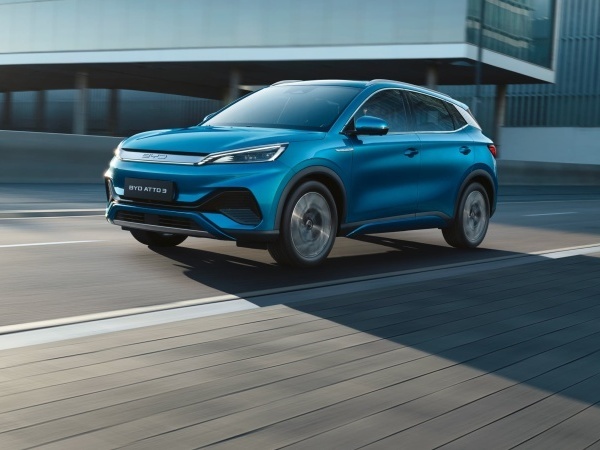
BYD ATTO 3 Interior Malaysia: Where Simplicity Meets Smart Technology
LienJul 22, 2025
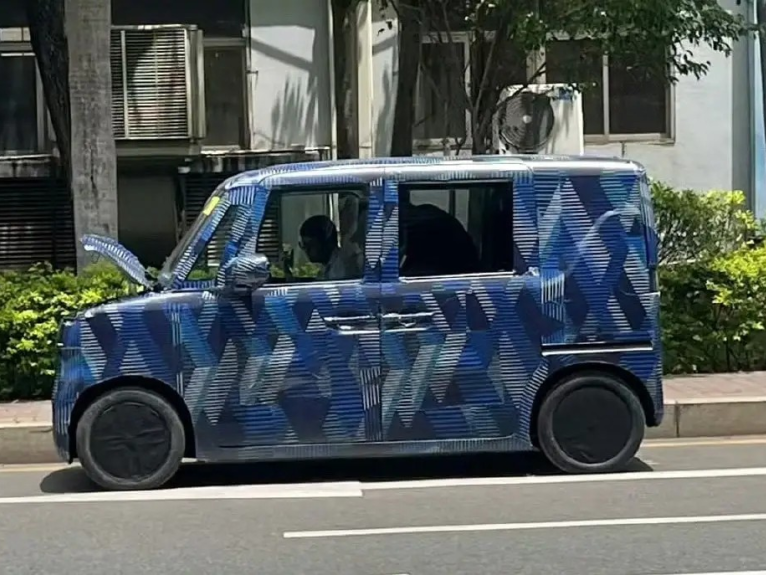
BYD has Launched a K-Car Targeting the Japanese Market, Aiming to Challenge Local Automotive Brands
AshleyMay 20, 2025
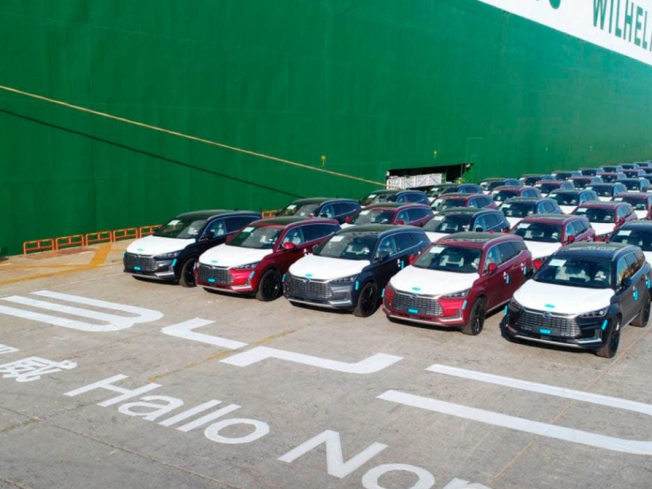
BYD Exports 214K Vehicles in Q1, Top Sales in 7 Markets
RobertApr 30, 2025
View More





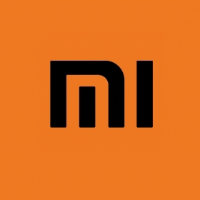
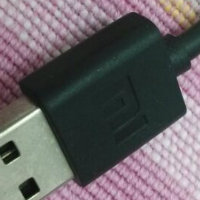





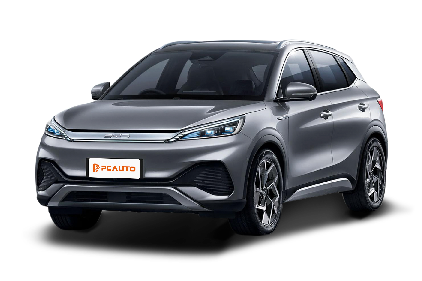





Pros
Cons